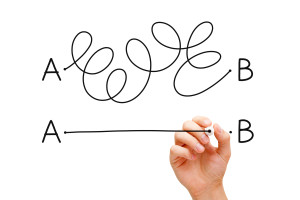
I received a USPTO Office Action, what do I do next?
 Below you will find answers to some common questions posed by applicants who have started the trademark application process themselves without the assistance of a trademark attorney. We hope you find them helpful. Of course, our attorneys are available to assist you with questions or clarifications related to your specific “Office Action” a.k.a. USPTO Office Action.
Below you will find answers to some common questions posed by applicants who have started the trademark application process themselves without the assistance of a trademark attorney. We hope you find them helpful. Of course, our attorneys are available to assist you with questions or clarifications related to your specific “Office Action” a.k.a. USPTO Office Action.
What is an Office Action?
An “Office Action” informs you that the Examining Trademark Attorney has reviewed your trademark application and found problems, which must be corrected otherwise your application will be refused.
What is the difference between a “non-final” and “final” Office Action?
There are two types of Office Actions: non-final and final. A non-final Office Action identifies a problem for the first time. The Examining Attorney issues a “final” Office Action when he or she determines that the applicant’s response to the previous Office Action is inadequate. An applicant’s only response to a final Office Action is either do what the Examining Attorney asks or appeal to the Trademark Trial and Appeal Board.
Why did the USPTO issue an Office Action?
There are many potential reasons why your trademark application did not pass muster with the Examining Attorney. Here are some typical reasons:
- There is a problem with your description of goods and services;
- There is a problem with the trademark specimen, which you submitted;
- You must disclaim certain terms;
- Your proposed trademark is descriptive, deceptive, or impermissible for other reasons.
- You did not do an adequate trademark search before filing your application and the Examining Attorney has concluded that there are other registered trademarks, which are confusingly similar.
What do I do?
You must file a response otherwise you risk abandoning your trademark application. Some responses are simple to make, others require you to argue your position to the Examining Attorney. In such cases, it is appropriate to file a legal argument.
Why should I use an Attorney to respond to an Office Action?
You do not need an attorney to file a response to USPTO Office Action but there are disadvantages to doing it yourself:
-
- You may not fully understand the reasons for the Office Action. Trademark law is deceptively simple but there are traps for the unwary. Falling into these traps will simply prolong what is already a lengthy process. Be prepared to receive another Office Action if you have not adequately responded to the previous Office Action
- You may not be qualified to respond to the Examining Attorney’s objections, particularly, if the response requires legal argument.
But it’s expensive to use an attorney!
Don’t be penny wise and pound-foolish. You’re developing a brand presumably because it has value. Spending a few hundred dollars so you can reap thousands more is never a bad choice.


